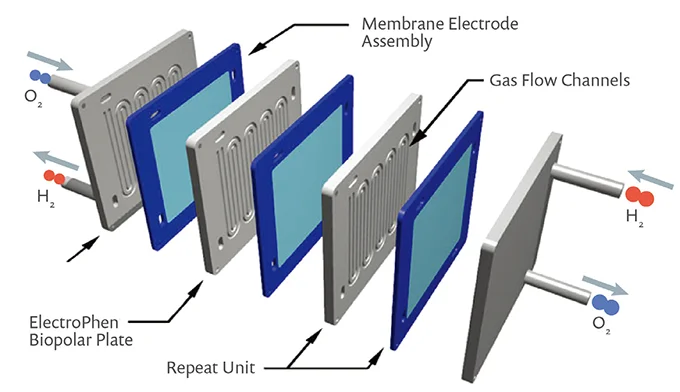A Proton Exchange Membrane (PEM) fuel cell is one of those types of fuel cells that extracts electricity from hydrogen while heating and producing water as a waste by-product. It is for their efficiency in generating clean fuel that they are liked for fitting into cars, mobile devices & stationary power sources. But what exactly makes up a PEM fuel cell? Being acquainted with the configuration of PEM fuel cell stacks is essential in knowing how it works and which obstacles engineers attempt to overcome in order to improve its performance, reliability, and cost.
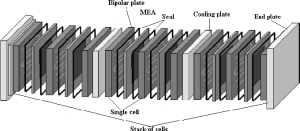
Basic Components of a PEM Fuel Cell
A PEM fuel cell consists, among other components, of a number of principal components-at the same working principles in producing power. The most prominent components include;
Proton Exchange Membrane (PEM) : The core of the cell, which carries protons.
Electrodes (Anode and Cathode) : Serve as catalysts for the reactions.
Catalyst Layers: Enhance the reaction at the electrodes.
Gas Diffusion Layers (GDL): Help spread the gasses uniformly.
First and foremost, these components shape the basic outline of the fuel cell stack.
The Rationale of A Proton Exchange Membrane (PEM)
A proton Exchange Membrane therefore refers to the heart of the units in such a system. It permits the transit of protons, by preventing electrons, thereby triggering the electrons to follow an external path through the circuit, with current induced in the coil.
Material : Typically, PEMs are comprised of polymers such as Nafion which has very high elements of proton conductivity
Function:
The membrane serves to conduct protons from the anode to the cathode, and at the same time, prevents any mixing of the Hydrogen and Oxygen gasses to take place.
Electrodes: Anode and Cathode.
The electrodes form the sites of active reaction:
Anode
Hydrogen gas is introduced to the Anode where it dissociates into protons and electrons. Protons go through the PEM while electrons are directed into the output circuit.
Cathode
The intake of oxygen in a cathode involves using direct protons and electrons generated from the varied bead voltages through circuits to bang synthesized water and other products.
The anode and cathode are normally constructed of porous carbon substrates which mechanically support the layers of catalyst.
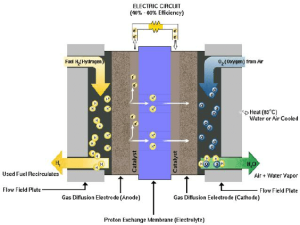
THEIR CATALYSTS LAYERS
Catalyst layers are complicated structures which enhance the rate of the processes in both anode and cathode. The most frequently used catalyst is platinum despite the fact that the carbon based materials are gaining more market.
Task:
The effect of using a catalyst is principally a reduction in the activation energy that is required to cause the reactions, thus improving the efficiency of the fuel cell.
New possibilities:
It is known that there is such research in order to find cheaper and more easily available catalysts for those containing platinum.
Gas Diffusion Layers (GDL)
The Gas Diffusion Layers are used to ensure that the gasses are distributed adequately over the catalyst layers.
Materials:
Usually, the GDLs are composed of porous carbon cloth/paper that guarantees appropriate delivery of the required reactant gasses, such as hydrogen and oxygen to the catalyst layers.
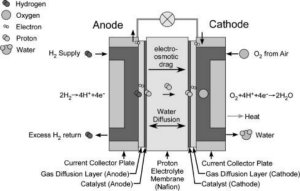
Importance:
The GDLs also take care of the byproduct water produced at the cathode in order to avoid flooding, and also enhances performance.
Flow Fields and Bipolar Plates
The flow fields and the bipolar plates direct the gasses through the fuel cell as well as during the successful current collection.
Flow Fields:
These channels convey the hydrogen and oxygen to the suitable compartments of the cell.
Bipolar Plates:
These are the graphite or coated metal plates that conduct current between two cells straddled by them and also act as thermal and fluid management devices.
Membrane Electrode Assembly (MEA)
The Membrane Electrode Assembly (MEA) is the basic building block of the PEM fuel cell that incorporates the PEM, catalyst layers and the GDLs combined.
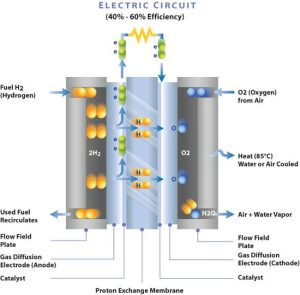
Importance:
In the MEA, the most significant electrochemical processes take place therefore making it the most important part of the stack.
Design Considerations
Reliable construction of the MEA promotes effective functionality and longevity.
Water and Heat Management
Water and heat management are two of the most important processes in the functioning of a PEM fuel cell stack.
Water Management:
The criteria that govern the use of water in an NOB are the quantities in-displaced water out of the gas diffusion layer (GDLs) and the amounts that can sustain the membranes without membranes ‘sufficient’ being faulted.
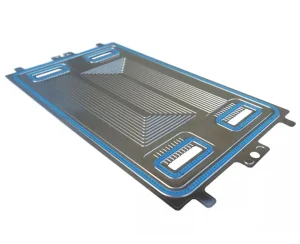
Heat Management:
Comprehensive methods including advanced cooling systems have to be incorporated to exhaust all heat emanating from these operations.
Sealing Mechanisms
Proper sealing in the PEM fuel cell is essential in minimizing the leakage, thus optimum performance is achieved.
Importance:
The purpose of these seals is to make sure that all the necessary gasses are retained in their chambers where they belong and do not intermingle until necessary.
Sealing Materials:
In order to achieve the design criteria of the stack, sealing devices are commonly made from materials that can withstand high temperatures as well as chemicals.

Compression of the Stack
The compression of the stack component keeps the relative positions of the various parts of a cell and defines the contact between MEA, GDL and bipolar plates.
Importance:
Reasonable compression enhances the electrical connection and loops away the loopholes constraints improving thereby efficiency.
Stack Durability and Lifespan
Several factors determine the lifespan of PEM fuel stacks including the degree of material burn, operational temperature, and effectiveness of the water and heat management systems.
Material Durability:
Appropriate practice of material selection and appropriate estimation of every part during construction will be essential if desired life expectancy is to be of importance.
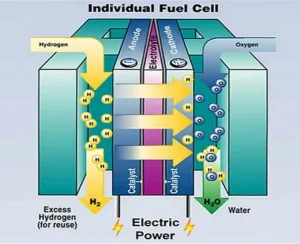
Efficiency of the PEM Fuel Cell Stack
The design of the PEM fuel cell dictates the overall power efficiency or respective overall component efficiency.
Factors that Affect Efficiency:
Prestige practices such as management of gas flow, perfluorosulfonic ion exchange membrane (PEM), and the working activity of the catalyst are important for good efficiency.
Challenges in Designing PEM Fuel Cell Stacks
PEM fuel cells, however, hold many design problems such as:
Material Cost:
Use of platinum catalysts and other advanced materials would increase the overall cost of the fuel cell.
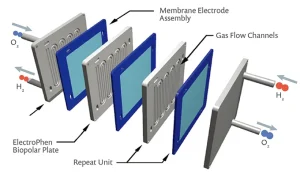
As a leading provider of photochemical etching custom services, TMN boasts a technical team of over 100 members, including engineers and chemists with professional degrees. TMN is dedicated to developing groundbreaking photochemical etching technologies, aiming for stricter tolerances, better precision, finer functionalities, and thinner components. Because of this, TMN offers a variety of specialized technical support to bipolar plate customers, receiving unanimous praise from clients.
With over a decade of foreign trade expertise, TMN has extensive experience in import and export. TMN’s custom-etched metal bipolar plates have been exported to the United Kingdom, the United States, Switzerland, Hungary, Germany, Estonia, Latvia, the Czech Republic , India, and Saudi Arabia, serving customers dedicated to the research and production of fuel cell stacks and water electrolyzers. Additionally, we can prepare relevant documents and COC certificates for customs clearance and import inspections upon delivery.
Visit our Facebook page or LinkedIn for further information.
What is the Significance of Photochemical Etching in PEM Cell Testing?

